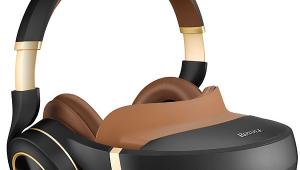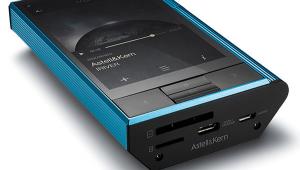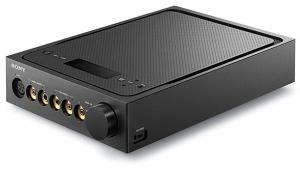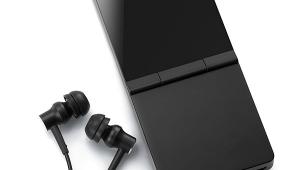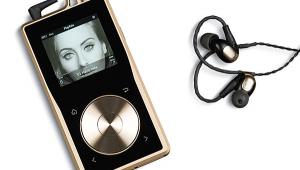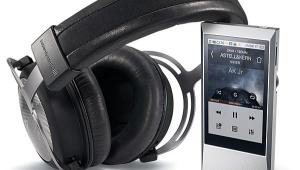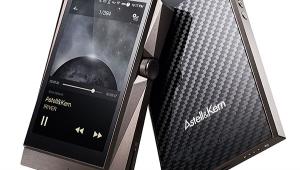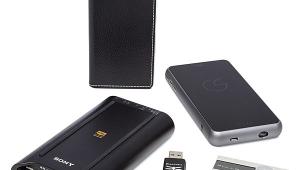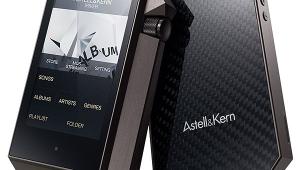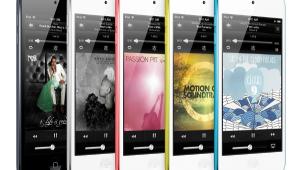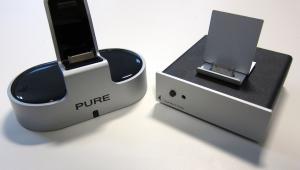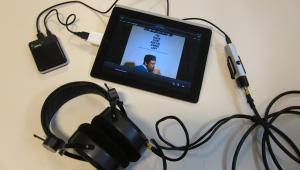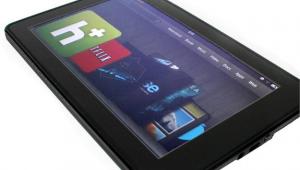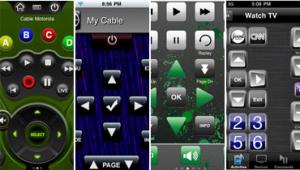SanDisk Sansa e280 Portable Media Player
SanDisk has been building on their position as a Flash memory-card manufacturer to offer music players. Search Amazon.com, and you'll find that the company's solid-state players come up as often as their highly rated SD cards, putting them at the forefront of iPod competition. The Sansa e280's main attraction—a compelling one—is 8 gigabytes of storage, making it one of the most capacious memory-based players out there.

In fact, until recently, when Apple updated the iPod line, SanDisk was the champ. Apple's iPod nano topped off at 4 GB and sold for $249, or $62.25 per gigabyte. The Sansa e280 provides 8 GB for $250, or $31.25 per gig. Now Apple offers the same deal, and it's fair to assume that direct competition from SanDisk is the reason. That makes SanDisk—not Microsoft—the first portable-player maker to make Steve Jobs sweat.
The Sansa e200 line of players come with another memory-related advantage—a microSD card slot for extending the players' capacities even further. A 2-GB SanDisk microSD card is $99. That comes to $49.50 per gigabyte, comparable to the 4-GB Sansa player. Unlike the nanos, the Sansas also come with FM tuners (which work surprisingly well, even without an antenna) and voice recorders (yawn). SanDisk offers a base station for recharging and plugging into a larger system. A DIY replacement battery kit goes for $20. Coming soon is the Sansa Rhapsody e200 line, which will work with the RealNetworks download service, although the model under review here is not compatible with Rhapsody.
The Sansa e280 is exactly the height of an iPod nano, although it's maybe one-eighth of an inch wider and twice as thick. The color LCD is about the same width as the nano's but is a good half an inch taller. The headphone jack is at the top right—I've never gotten used to the nano's bottom-right placement. Controls include four navigation buttons surrounding a concave enter button—with a bright, blue LED ring amidst them—and a separate menu button at the bottom left. The hold button is on top, and a button that triggers the recording function is on the left side. Should you wish to insert a microSD card, the slot is on the right side. A soft carrying case is supplied, and it's jolly useful—that's another idea Apple should, ahem, borrow.
At 18 seconds, warm-up time is significantly longer than the iPod nano's five seconds. The black-and-white warm-up screen gives way to color graphics. Pictured on the music menu is a graphic of a pair of headphones against an optical disc. The recording-tape-reel graphic hovering above it signifies video, while the boom-box graphic below it signifies FM radio. Turn the ring, and the LED flips on. Then watch the icons and their adjacent text legends scroll past. The operative icon is always the largest, and it gets smaller when you scroll to something else.
The music-playback screen is reminiscent of the iPod's, with Artists, Albums, Songs, Genres, Play Lists, My Top Rated, Recordings, Music Options (Repeat, Shuffle, EQ), Play All, and Play Previous. Navigation won't challenge your iPod-developed reflexes except in one respect. When you're on the iPod's Now Playing screen, hitting Menu takes you back to the album's list of song titles. With the SanDisk, hitting Menu takes you all the way back to the main menu, and getting to the album's song-title list takes four right clicks. A shorter route back to the song titles is one down click and enter. It's not bad, but the iPod has a tiny edge in control logic. The iPod is also better in a tactile sense—on the Sansa, the raised ring gets in the way of the four navigation buttons. The buttons are shorter than the ring and too small. Supported audio file formats include MP3, WMA-DRM 10, and WAV (but not the AAC-DRM files of iTunes). On the visual side is the MJPEG format; software converts MPEG-4, WMV, DivX, JPG, and BMP files to that format. The Sansa Media Convertor application, supplied on CD, converts video and stills for loading onto the player. Having no interest whatsoever in tiny-screen video, I did not test the video features.
You don't need to install the software to load music files from a PC, although you do need the supplied interconnect, which has a standard large USB connector at one end and a wide connector at the other end. The latter looks like a clone of Apple's docking plug, although SanDisk says it's proprietary. And, sure enough, the Apple cable doesn't fit the Sansa's slot. My Windows XP PC quickly recognized the player, and, in half a minute, I was using Windows Explorer to drag and drop files from my PC's music folder into the Sansa.
Progress was slow. The player seemed to support USB at its slowest speed (USB 1.1). For each album I transferred, it asked me if I wanted to transfer the desktop.ini file, and I repeatedly said no. The Sansa wouldn't complete a transfer until I did this, so I couldn't just walk away during the transfer process to make tea and return to find the player filled. It was impossible to track storage-capacity level by the usual My Computer method (right-click drive, click Properties). I checked it from the player menu later; the SanDisk software also performs this function.
Although Windows recognized the player as a drive—or two drives, with the addition of a microSD card—the Windows task bar (or notification bar) at the lower-right corner of my PC monitor did not list the player among the devices to eject. Nor could I access the eject function by right-clicking the Sansa in My Computer. So, I held my breath and disconnected it anyway. The first time I did this, the player's screen went from "connected" to "writing," even though no writing was taking place. After a few minutes, the player shut itself down, whereupon I could reboot and use it. Subsequent disconnections went more smoothly, with seemingly no further confusion to the player. Presumably, it established some kind of relationship with Windows that did not involve the eject command.
These were quirks, not deal breakers. On the positive side, I got to use Windows Explorer directly, which was simpler than my usual iPod routine—opening both Windows Explorer and iTunes windows and dragging files from the former to the latter. The Sansa's information menu told me I'd loaded 988 songs (and chamber-music movements and jazz excursions) consisting almost entirely of MP3s at 192 kilobits per second. Owners of 80-GB hard-drive iPods may scoff, but as the owner of a 2-GB nano, I found the bump up to 8 GB quite significant. The increase in choices made a cross-country plane journey a lot more interesting. A rated battery capacity of 20 hours doesn't hurt—I got from New York to Denver and back, including time spent waiting in airports, and a few hours of playing time were still left when I got home.
Even better news: By portable-device standards, this SanDisk music player is a fine performer. When I plugged it into my subwoofer-equipped desktop system, drums sounded like drums: pounding, not just popping. I know I've run across a mediocre player when I empty my headphone drawer and find the differences between transducers underwhelming. By the same token, I know I've run across a great player when each headphone in my collection emerges with its full sonic signature, and switching between them becomes a compulsive pleasure. With the SanDisk, I was plugging and unplugging like a happy lunatic.
Even with lowly MP3s, the Sansa allowed me to rediscover the sensuously sculpted midrange of my Grado SR60 headphones, the laserlike focus of my Bose TriPort, the detailed mids and tight bass of my Yamaha RH-5Ma, and the recording-studio-caliber soundstage (can headphones have a soundstage?) of my old AKG K 240. My Sony MDR-NC11 and Shure i4c earbuds also performed at their best when connected to the Sansa. I wouldn't say it's better than my iPod nano—but it is every bit as good. The AKG, which isn't designed for portable use, required the player's full volume capability, while the others ran at 40 to 50 percent of maximum. That's about average sensitivity.
So, how does the SanDisk Sansa e280 stack up against the iPod nano? In capacity, price, and sound, they're neck and neck. The iPod retains a slight (make that faint) advantage in user interface. And, if thickness matters, the old nano is slightly less bulky, and a newer and even slimmer nano is hitting the stores. Still, I was extremely impressed with the SanDisk—enough to keep it in heavy rotation.
- Log in or register to post comments
